By PETER HUESSY
“Ivy King” nuclear test, 1952.
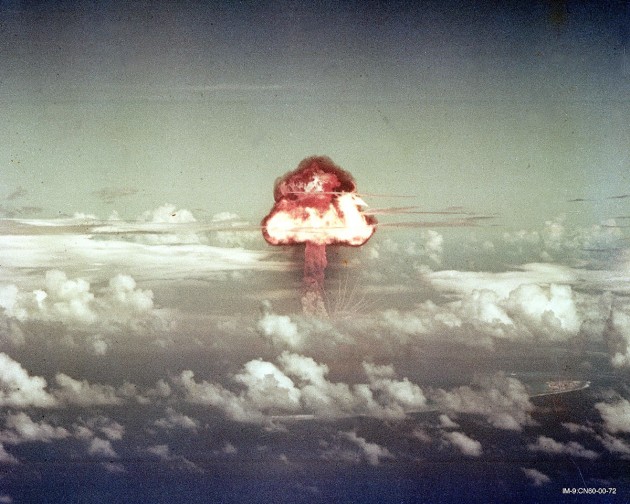 In the coming clash between President Trump’s $750 billion defense budget and House Democrats’ desire to cut Pentagon spending, especially on nuclear weapons, there will be tremendous fiscal pressure to shortchange the almost $30 billion annual cost to modernize America’s strategic deterrent. The ideological cover for such penny-wise, pound-foolish cuts is the so-called Global Zero movement to eliminate all nuclear weapons.
In the coming clash between President Trump’s $750 billion defense budget and House Democrats’ desire to cut Pentagon spending, especially on nuclear weapons, there will be tremendous fiscal pressure to shortchange the almost $30 billion annual cost to modernize America’s strategic deterrent. The ideological cover for such penny-wise, pound-foolish cuts is the so-called Global Zero movement to eliminate all nuclear weapons.
But in reality, the global-zero idealists practice a dangerous double standard: They push the US to unilaterally cut its nuclear arsenal even as they ignore or excuse nuclear buildups by Russia, China, North Korea, and (under the table) Iran. Even if they were consistent, their pursuit of zero nuclear weapons would still make no sense when none of the nine existing nuclear powers has any interest in completely disarming.
To deny the need for a strong American deterrent requires somehow handwaving away the existence of at least nine nuclear arsenals, at least three of them in hands hostile to the United States. This is not strategy: It is fantasy.
President Ronald Reagan greets General Secretary Mikhail Gorbachev at a 1985 summit
Lessons From Reagan
Instead of chasing the phantom of universal disarmament, we should look to President Reagan, whose strategy of “peace through strength” balanced nuclear reductions with nuclear modernization, securing sufficient public and Congressional support to simultaneously shrink and modernize the nuclear force.
At the time, the disarmament community was pushing a nuclear freeze, under which neither the US nor the USSR would introduce new nuclear weapons – freezing in place a Soviet advantage. The Soviets proposed the idea in the first place because they had fully modernized their nuclear forces while the United States had not.
Minuteman ICBM silo
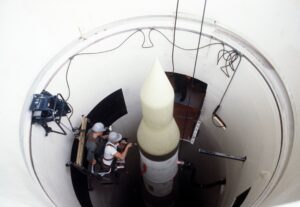 The current administration is facing a similar dilemma. Just as when Ronald Reagan became President, our nuclear forces are now aging and in dire need of modernization. But instead of a push for a nuclear freeze, the disarmament community is now pursuing the chimerical objective of banning all nuclear weapons through an international treaty sponsored by the United Nations.
The current administration is facing a similar dilemma. Just as when Ronald Reagan became President, our nuclear forces are now aging and in dire need of modernization. But instead of a push for a nuclear freeze, the disarmament community is now pursuing the chimerical objective of banning all nuclear weapons through an international treaty sponsored by the United Nations.
To get there, the disarmament supporters are pushing major unilateral US nuclear reductions while simultaneously soft-pedaling Russia violations of existing nuclear treaties such as INF, ignoring China’s low-profile but robust nuclear buildup, excusing North Korea’s rapid expansion of its new arsenal, imputing innocent intentions to Iran’s persistent pursuit of nuclear energy, and extending for five more years the 2010 New Start treaty warhead ceilings. Here the disarmament community suffers from a certain degree of schizophrenia.
The unilateral US nuclear reductions sought by the disarmers are not required by the 2010 New START nuclear agreement extension between the United States and Russia. Extending New START would also not necessarily require Russia to comply with the 1987 Intermediate-range Nuclear Forces treaty, which Moscow has gravely violated with a new cruise missile – and from which President Trump has officially declared his intention to withdraw.
North Korean test launch
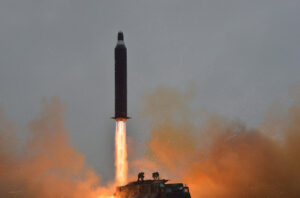 Russia is not the only beneficiary of this blind-eye approach to global zero. A striking feature of the disarmament community’s analysis of North Korea is its open contempt for the American administration’s push for complete and irreversible de-nuclearization. Almost in unison, the disarmament advocates justify the North’s refusal to implement its promise of nuclear disarmament by just like North Korea blaming America for a “hostile” policy toward North Korea.
Russia is not the only beneficiary of this blind-eye approach to global zero. A striking feature of the disarmament community’s analysis of North Korea is its open contempt for the American administration’s push for complete and irreversible de-nuclearization. Almost in unison, the disarmament advocates justify the North’s refusal to implement its promise of nuclear disarmament by just like North Korea blaming America for a “hostile” policy toward North Korea.
Is the United States really an imminent threat to the existence of the Kim dynasty and its corrupt regime? Since the end of the Korean War in 1953, North Korea has engaged in multiple military and terror attacks against the United States and its allies, from hijacking the USS Pueblo in 1968, to killing nearly the entire South Korean cabinet during its state visit to Burma in 1983, to sinking the South Korean corvette Cheonan in 2010. Yet despite these multiple military and terror attacks against the United States and the Republic of Korea, since the end of the Korean War in 1953 the US has not once used military force against the North. How then can the United States be blamed for terrifying the North into its rapid nuclear buildup?
Types and ranges of Iranian missiles (Graphic by Center for Strategic & International Studies)
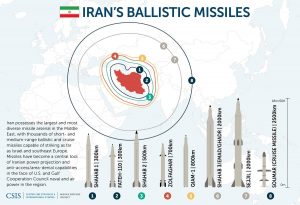 As for Iran, despite Iranian complicity in numerous deadly terrorist attacks against the United States, the disarmament advocates support a deeply flawed agreement with Iran called the Joint Comprehensive Program of Action or (JCPOA). The deal would at best pause Iran’s nuclear weapons program, but allow Iran to pursue, in the words of former CIA Director General Michael Hayden, an “industrial strength nuclear weapons program” with a full-up nuclear fuel cycle capability.
As for Iran, despite Iranian complicity in numerous deadly terrorist attacks against the United States, the disarmament advocates support a deeply flawed agreement with Iran called the Joint Comprehensive Program of Action or (JCPOA). The deal would at best pause Iran’s nuclear weapons program, but allow Iran to pursue, in the words of former CIA Director General Michael Hayden, an “industrial strength nuclear weapons program” with a full-up nuclear fuel cycle capability.
Like North Korea, Iran is using the very talking points used by the American disarmament advocates, including the threat that it will rapidly develop nuclear weapons now unless the United States acquiesces in the JCPOA — which allows Iran to develop nuclear weapons later! This ignores how Iran continues to refuse inspections of military and suspect nuclear sites by the United Nation’s International Atomic Energy Administration as required by the JCPOA.
Thus, despite rhetorical support for zero nuclear weapons, the disarmament community provides ideological cover for North Korea keep its nuclear weapons now and for Iran to pursue nuclear weapons in the longer term.
But global zero and nuclear nonproliferation are hardly advanced by arguments that North Korea is justified in having nuclear weapons now and Iran later. Apparently, the only nuclear power that should reduce its weapons today is the United States, and we have to do so unilaterally and significantly.
Types and ranges of Russian missiles (graphic by Center for Strategic & International Studies)
Against Unilateral Disarmament
For example, the disarmament folks are pushing for unilateral cuts in American long range strategic nuclear weapons by upwards of 70 percent, even though the weapons we now have in our arsenal are legally allowed by the 2010 New START treaty between the USA and Russia. These proposed cuts would eliminate all 400 of our land-based ICBMs, prohibit all our long-range bombers from having a nuclear capability, and cut our planned fleet of twelve Columbia-class nuclear-armed submarines to as few as six.
Types and ranges of Chinese ballistic missiles (Graphic by Center for Security & International Studies)
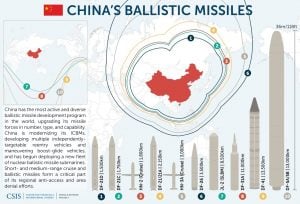 The new House Armed Services chairman, Adam Smith, has proposed the United States keep only as many warheads as deployed by the People’s Republic of China. That means the American nuclear force structure might end up with only 300 warheads, some 80 percent less than we are allowed under the 2010 New Start treaty, although China’s secrecy and nuclear buildup make it hard to know their real deployed number.
The new House Armed Services chairman, Adam Smith, has proposed the United States keep only as many warheads as deployed by the People’s Republic of China. That means the American nuclear force structure might end up with only 300 warheads, some 80 percent less than we are allowed under the 2010 New Start treaty, although China’s secrecy and nuclear buildup make it hard to know their real deployed number.
How ironic that while international law denies North Korea and Iran the right to have nuclear weapons, the disarmament community is not demanding these rogue regimes abide by the existing law, but instead wants to pass a new law banning such weapons worldwide. At the same time, while North Korea and Iran get off the legal hook, the disarmament community is making an all-out effort to curtail and block the modernization of America’s nuclear deterrent.
Meanwhile, many deterrence professionals are seriously concerned that the Russians are not only violating the 1987 INF treaty but also the 2010 New Start treaty. It would just be one more instance of their continued and blatant violation of at least seven additional security agreements and treaties they have signed with the United States.
Types and ranges of North Korean missiles (Graphic by Center for Strategic & International Studies)
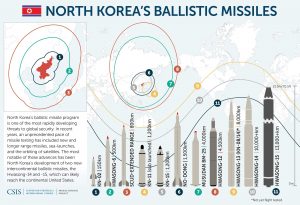 Almost forgotten in the nuclear debate is the goal of making more transparent the entire Chinese nuclear enterprise as well as highlighting the Chinese nuclear proliferation history. As Tom Reed, President Reagan’s deputy national security adviser writes in The Nuclear Express, China made an explicit decision in 1982 to export nuclear weapons technology to Pakistan directly and indirectly to Iran, Libya, North Korea and Iraq largely through the creation of what I have referred to as the Pakistani “Nukes ‘R Us” A.Q. Khan nuclear network.
Almost forgotten in the nuclear debate is the goal of making more transparent the entire Chinese nuclear enterprise as well as highlighting the Chinese nuclear proliferation history. As Tom Reed, President Reagan’s deputy national security adviser writes in The Nuclear Express, China made an explicit decision in 1982 to export nuclear weapons technology to Pakistan directly and indirectly to Iran, Libya, North Korea and Iraq largely through the creation of what I have referred to as the Pakistani “Nukes ‘R Us” A.Q. Khan nuclear network.
In short, the disarmament community supports Russia, China, and North Korea keeping, and Iran pursuing, nuclear weapons that will make any aggression on their parts much harder to deter. Meanwhile the USA must dismantle huge swaths of its nuclear arsenal, which is internationally recognized as keeping the peace. It is not just the objectives of the disarmament community that are concerning here: It is the entire thought process on which these objectives rest.
What would be a better set of objectives? Apart from pursuing a nuclear-free Korean Peninsula and stopping Iran’s continued pursuit of nuclear weapons and long-range missiles, the United States should secure the full modernization of our nuclear deterrent. That must include 400 GBSD land-based missiles, 12 Columbia-class submarines, and 60 strategic bombers with both nuclear cruise missiles and gravity bombs.
President Reagan’s watchword of “Peace through Strength” was not just a slogan. It described a policy that worked. Unilateral restraint and appeasement does not. That is a lesson of the Cold War and a sound foundation on which to rest America’s security strategy.
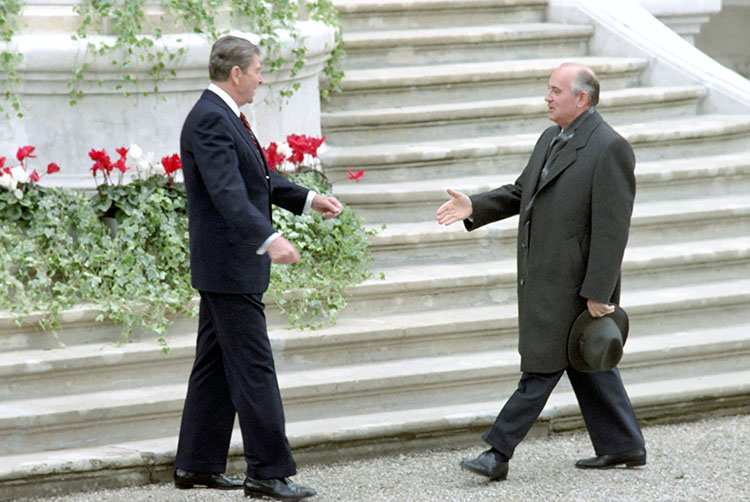
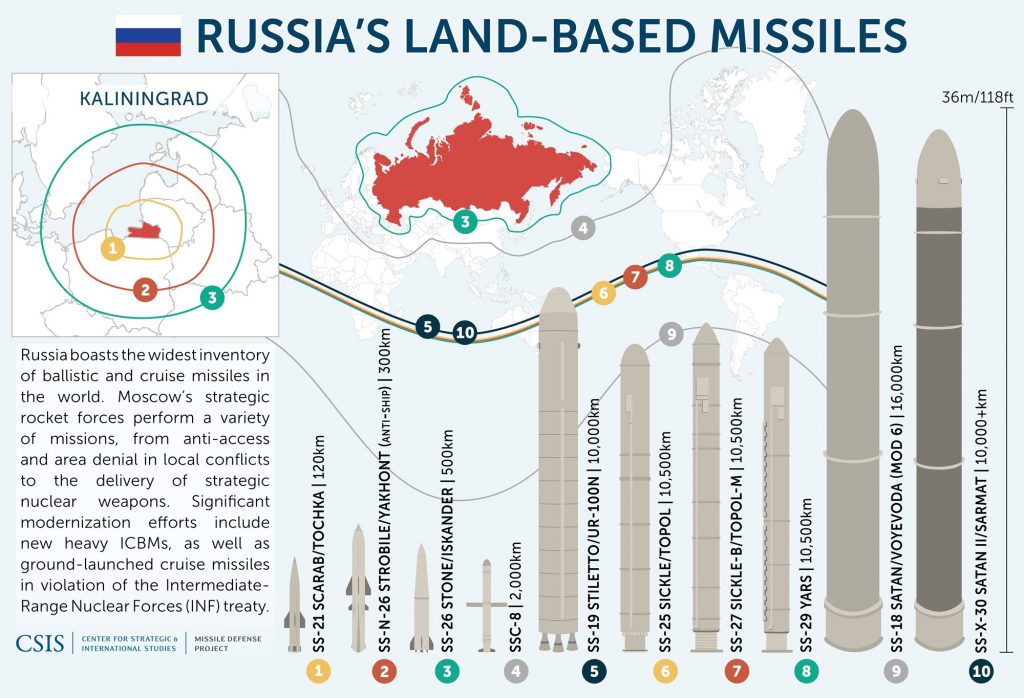
No comments:
Post a Comment